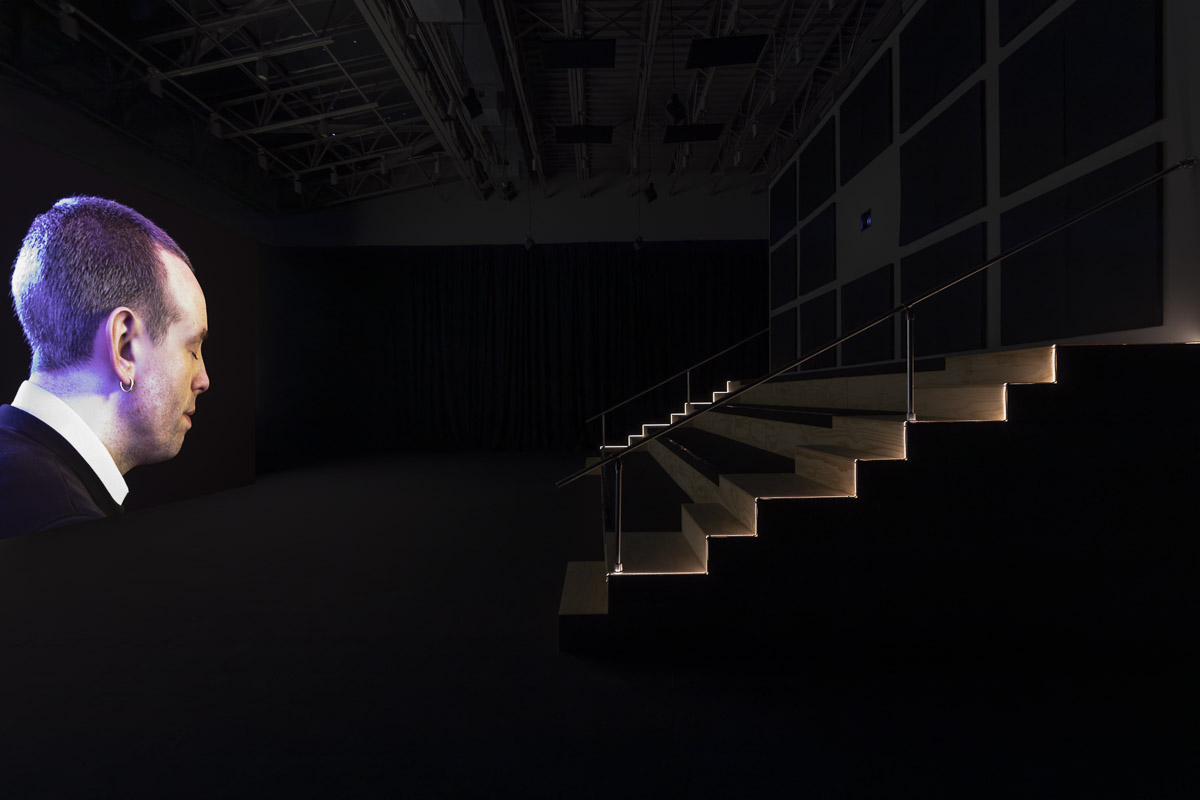Ed Atkins’s earlier work brought joy in the act of comparing our eczemas rather than our mythologies. In the 2010s, he appropriated 3-D characters from prosumer platforms to animate imperfect skins in micro-narratives of soft melancholia. The appeal lay in the fact that his computer-generated imagery never took the form of dystopian platitudes. Instead, he made use of CGI with the intentions of a playful and reclusive performance artist.
In William Friedkin’s Sorcerer (1977), four men ride through Colombian badlands in modded GMC M211 U.S. military cargo trucks loaded with sticks of dynamite, “sweating” nitroglycerin. One of these M211s bears the name Sorcerer, allegedly a symbol for the wizardry of fate. In retrospect, the title is enough for the film to share the aura of Steven Spielberg’s Duel (1971) or, to push the thriller axis further into the supernatural, of John Carpenter’s Christine (1983). These cultural landmarks make the title of Ed Atkins and Steven Zultanski’s own Sorcerer (2022) a strong modifier of its reception, setting a horizon of expectation for the emergence of horror within otherwise uneventful material.
The dialogue of the filmed play is based on the recording of a banal conversation between three friends. On stage, the protagonists are casually sipping beers around a coffee table. In this setting akin to that of a bizarro sitcom, they behave like über-stoic toons, as if they were secretly monitored by an unseen Judge Doom. As the main protagonist was left alone on stage, I thought of Goodbye to Language (2014), in which Godard quotes his younger self: "The difficulty is not in showing the forest, but in showing a room where one knows that the forest is a few paces away." In Sorcerer, Atkins and Zultanski effortlessly show a room from which you know a Spar convenience store is a long, cold half-mile away. All it takes is Peter Christoffersen rummaging through the bottom of a low fridge for leftovers. To see him sucking up soggy spaghetti late at night is to witness a drab triumph over inert tentacles. Sorcerer is also a game of gestural primers, in which one sees cold pasta become form in the way Wallace Stevens’s Necessary Angel sees a pineapple on a tabletop turn into an owl sitting humped (“it has a hundred eyes”).
Intervening on historical film material often feels like an act of defacement. Atkins’s Voilà la vérité (2022) is an enhancement of a short sequence from Dimitri Kirsanoff’s silent Ménilmontant (1926). The sequence stages the encounter between an old man (a bougnat, probably) and a young grisette in Paris’s northeastern district. In Kirsanoff’s original, the story begins with a ruthless axe murder, but Atkins selects one of its softer moments. While the destitute girl daydreams of the comforts of bourgeois interiors from a park bench, with her baby on her lap, the man hands her a piece of bread and a slice of dry sausage without a word.
Atkins pushes a whole array of digital tools powered by AI beyond mere restoration purposes, to a point that allows him to populate Kirsanoff’s images with vivid colors and teeming details. The video stands as a virtuosic play on the excesses of realist technique, as in the early colorizations of postcards, with their sometimes outrageous sentimentality. On the soundtrack—heavy breath, running tap water, bread crunching—Atkins and David Kamp make overexpressive use of Foley, without deference to the original images.
The sound of breathing plays a stronger role in Pianowork 2 (2023), in which Atkins’s hyperrealistic CGI alter ego interprets Jürg Frey’s 2001 piano composition Klavierstück 2. Atkins’s virtual performance evinces a signature attention to the minute movements and expressions rendered by the modeling software: seemingly unassured, briefly contemplative, quasi-simian at times. In this journey in and out of 468 soundings of a perfect fourth, they imbue our perception of Frey’s conceptual piece with the allure of a private struggle with the instrument, punctuated by moments of epiphanic relief.
In their exploration of the delicate balance between technological under- and overinvestment and through a commitment to uncanny realism, Atkins and his collaborators skillfully depict the inherently alien nature of intimacy.
Ed Atkins with Steven Zultanski is on view through January 6 at Gladstone Gallery 21st and 64th Street locations.



